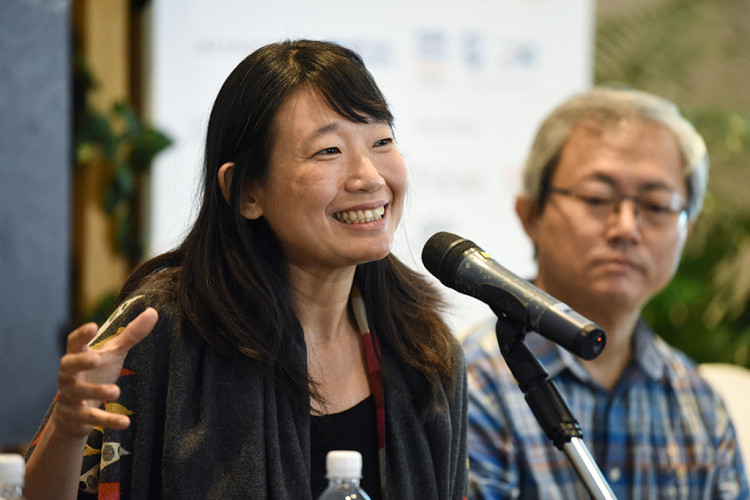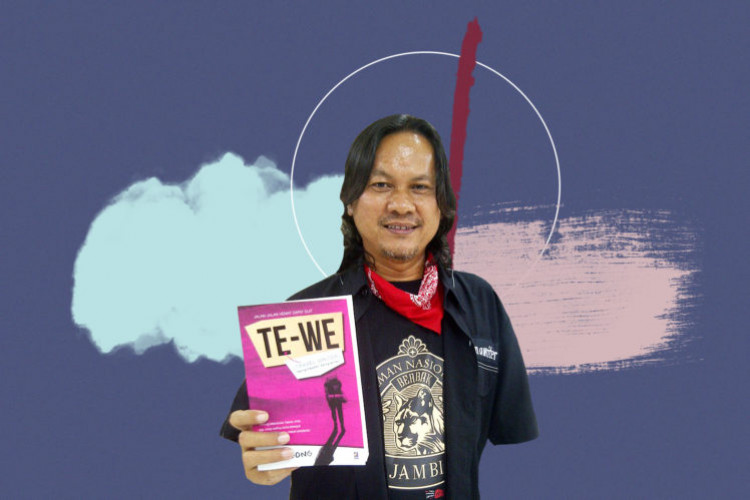










The 20th Century Batik Masterpieces
By Tumbu Ramelan, Wisjnuwati Mashadi, Afif Syabur, Suhartono
KR Communications
The 20th Century Batik Masterpieces is a collector’s book with a mission. It was put together not to merely display the beautiful collections of Tumbu Ramelan, but also to encourage the preservation of original batik. “Batik printing is not batik, it is textile with batik patterns,” goes a line in the book. In other words, this book only shows the finest original selection of batik from several provinces across the Indonesian archipelago, each province’s culture influencing the individual patterns. Filled with beautiful pictures of premium batik – from colourful ones to those that have a more traditional earthy look – this book is a must-have for batik and textile enthusiasts.
Insight Guides Indonesia
By Insight Guides
APA Publications
With the ubiquity of travel blogs that tell intimate first-hand accounts of an individual’s series of adventures in faraway cities and foreign lands, neutral and impersonal old-school guidebooks – no matter how informative they may be – are becoming less appealing that they are slowly gathering dust on the shelves. But does it really have to come down to this? Travel blogs, which not always updated by professionals who explore the world for a living, present that dangers of a biased perspective in which the blogger only highlights certain things that are far removed from the local context. Of course, bias is inevitable, but there are times when we might be doing ourselves a favour by relying for the most neutral source of information we can find – or at least, so that we have alternative references. A primary function of traditional guidebooks is that they help us to navigate through unknown territory. The personal anecdotes are secondary. If you happen to have some friends who are coming to Indonesia, you ought to recommend Insight Guides Indonesia, a comprehensive book that features a range of travel tips and must-see places – complete with carefully selected images. The book even begin with a concise history section, before moving on to sections related to cultural tidbits and detailed information about desirable destinations located in the vast regions of Indonesia.
The Barber and Other Short Stories
By Gus tf Sakai
The Lontar Foundation
Cerita pendek or more commonly known as “cerpen” is the Indonesian term for short stories. Indonesian magazine and newspaper subscribers would often find a short story written by both well-known and budding writers. Their presence is indeed felt by even the most casual reader. However, to say that these short stories are mere brief forms of literary entertainment would be a big mistake, as it is precisely their shortness that engages the mind. The Barber and Other Short Stories is an anthology that deserves to be praised as a serious product of Indonesian literature. Combining art and social criticism, Gus tf Sakai writes about domestic issues as well as highly imaginative mystic tales that portray various aspects of the Indonesian way of life. Though Indonesia is indeed a large nation whose many regions have their own set of values and norms, this collection can be read as a representative of the country’s collective culture in the way it touches upon problems of politics, social classes, gender, and superstitions. Another interesting feature of this book, which is also most likely found in other translated works, is the influence of Indonesian idioms such as “It was like pulling a piece of string out of a flour bag” (Bagai menarik benang dalam tepung). This enhances the Indonesian touch despite the fact that each story has been converted into another language.
I Am Woman!: Stories from Jurnal Perempuan
Edited by Pamela Allen and John H. McGlynn
The Lontar Foundation
Feminists have not had it easy in promoting the rights of women, but more important than the label of “feminism” itself is, of course, the will to discuss about women’s issues in a constructive manner. I Am Woman! is a collection that consists of short stories written by both male and female writer who speaks about the role and position of Indonesian women through the covertness of fiction. Putu Wijaya’s “Kartini” talks about the contradictions attached to Kartini’s iconic role in the history of feminism in Indonesia. How can a woman whose intelligence and courage had such a huge impact still be restricted by the rigidness of cultural conventions, those of which are most visibly seen in the way women were expected to dress? This contradiction was laid out in a more contemporary setting so that the people of today can think about its effect in today’s society. The other stories in this anthology cover similar ideas related to culture and how strict codes of conduct or adat act like anchors that prevent a society from evolving. The writers whose work is featured in this collection touch upon issues that are often thought to be controversial such as prostitution and domestic violence – just to name a few. Readers who are interested in the layered condition of femininity in Indonesia ought to pick up this loaded short story collection.
A Prayer to Conserve the Natural Beauty of Komodo Islands Indonesian Archipelago
By Habsari Budhi Utami
Canting Exploring Indonesia
It is not uncommon for a country’s capital city to enjoy (or suffer from) all the attention. At times, the spotlight is so intense that the identity of a country, no matter how large, gets reduced to a tiny spot on the map. It is unfortunate that Indonesia is not excluded from such a tendency. While Jakarta is indeed a lively place in so many ways, Indonesia stretches far beyond its boundaries. There are so many beautiful places in Indonesia that are forgotten once the holiday season has come to an end. Habsari Budhi Utami’s touching book is not only a reminder, but also a visual invitation to preserve one of Indonesia’s breathtaking natural assets: the Komodo Islands. Each photo compiled in this book is followed by a caption with a religious, if not spiritual, undertone – fulfilling the promise of the title. As we flip through the pages, we will be moved by the emotional charge of the pictures – hopefully, to the extent that we will also think about the future and sustainability of those heavenly areas.
Before Dawn: The Poetry of Sapardi Djoko Damono
By Sapardi Djoko Damono
The Lontar Foundation
Translating an extensive piece of work is indeed a tricky and time-consuming task, but translating short poems is no easier. John H. McGlynn’s successful attempt at extracting an intricate thoughts and feelings from the words of an Indonesian poet and then transporting them into a language that is disconnected from his cultural origins is something that needs to be praised. In this collection of poems that were written over the course of four decades, Sapardi exposes his sensitivity to the human condition. His simple expressions, which can also be seen in the English translations, do not reduce the emotions that they represent. The verses that cover themes of love, loss, and daily routines create a mesmerizing image of a man who has passed numerous transitions throughout his life with the loyal company of his pen and poetic finesse. Arranged in chronological order, Sapardi’s poems in Before Dawn ought to be read as a poetic autobiography.
Greetings from Jakarta: Postcards of a Capital 1900-1950
By Scott Merrillees
Equinox
Frequent travellers would often find themselves sending postcards to family and friends back home or elsewhere. It is no surprise that these rectangular cards are seen as souvenirs – pieces of a person’s adventure – and nothing more than that. But as Greetings from Jakarta proves, postcards can indeed be more than souvenirs to share or keep for one’s personal collection. Postcards can actually provide historical information. If a picture can tell a thousand words, a postcard can tell a thousand stories of a place at a given point in time. Scott Merrilless has collected 460 postcards that were produced in the span of half a century. Readers can see how much Pasar Baru and the many houses scattered around various parts of Jakarta that are clearly influenced by Dutch standards of aesthetics have changed over the years. When a city is in the middle of experiencing a rapid change, it might do its residents some good to stop and look back at how it used to be in the past.
Telegram
By Putu Wijaya
The Lontar Foundation
A novel can leave a lasting impression on its readers for many reasons. Mind-bending plots and unforgettable dialogs are surely on top of the list, but sometimes, the reason why we cannot stop thinking of a book is because it contains elements that we cannot simply lump into clear categories. The main character of Putu Wijaya’s Telegram is an example of one such element that escapes stereotypes. We do not know how to feel about him. Should we sympathize with him, or should we loathe this unreliable character right to the very last sentence? This story revolves around a Balinese journalist who believes that telegrams are always associated with tragedy. Though a large part of the story explores the main characters unstable state of mind, and how he continuously tries to escape from the unpleasant realities of his life, the story also brings in family issues, notions of life and death, and how they could possibly affect the cycle of life. This book is not what one would call an entertaining read, but it is one that constantly pushes the reader to think and connect details.
Sidelines: Thought Pieces from TEMPO Magazine
By Goenawan Mohamad
Equinox
Goenawan Mohamad, one of the founders of Tempo Magazine back in 1971, is definitely a notable figure in Indonesia who has been active in the pursuit of critical thinking until this very day. He has been extremely prolific throughout his years at Tempo, writing about a wide range of issues in the magazine’s column entitled Catatan Pinggir, or “Sidelines” in English. This collection only features a small portion of his impressive body of work, but it does not mean that it cannot effectively deliver his ambitious visions and devotion to improve Indonesia. Divided into five general topics beginning from “Identity and Change” and ending at “International,” Sidelines: Thought Pieces from Tempo Magazine is a great point at which one can familiarize oneself with the ideas of this highly respected thinker and writer. Readers can learn about social, political and cultural issues in Indonesia through Goenawan Mohamad’s observant eyes and optimal use of external references. Without discarding the context in which the works of others were written, he incorporates texts by other thinkers to illustrate and support his own arguments – a skill that is required in the field of critical writing. Reading his works in their original language is clearly recommended, but this translated version does not reduce his core ideas – in fact, it adds a fresh element to them.
My Jakarta: Stories of Life in the City from the Pages of The Jakarta Globe
Edited by Ben O’ Neill
Jakarta Globe Media
In many cases, the most interesting revelations come from the simplest questions. This fantastic compilation of Jakarta’s extremely dynamic characters is based on a question as simple as: What is your life here like? “My Jakarta” is the title of The Jakarta Globe’s column that features interviews of people who, despite coming from different backgrounds, have one sure thing in common: that they are all trying to cope with the demanding lifestyle of this bustling capital. Though the premise of this collection appears to be simple enough, reading through the comments of each interviewee will reveal the complexities of living in Jakarta. The words of powerful public figures, company employees, artists, expats, buskers, and many others create a picture of Jakarta that would have remained incomplete if readers were only exposed to the testimonies of a small and privileged group of people. Some of the striking individuals who were interviewed were brutally honest about the failures of this city, while some were more reserved though somehow managed to speak their mind through humourous remarks. Thankfully, amid the negativity there were also positive notes about Jakarta. Overall, readers would feel a strange mixture of love and hate towards Jakarta after going through this book from cover to cover. It serves as a reminder that all cities, no matter how chaotic, can also be enjoyable so long as we give it a chance.











